As the Trinidad and Tobago Men’s National Senior Team prepare to kick off their Qatar 2022 World Cup qualifying series, journalist Lasana Liburd recalls our first campaign with former national goalkeeper Lincoln ‘Tiger’ Phillips—in the first instalment of a series on T&T’s World Cup adventures, adapted from articles published first in the Trinidad Express in 2006:

The twin-island nation is only the second country in the English-speaking Caribbean to qualify in the tournament’s history, after Jamaica’s Reggae Boyz in 1998.
(Copyright AP Photo/Shirley Bahadur)
On 15 November 2005, Trinidad and Tobago created history by qualifying for its first World Cup senior tournament. The tiny twin-island republic of 1.3 million people became the smallest nation ever to appear at a World Cup final when the Soca Warriors stepped on to the field in field in Dortmund to face Sweden—although Iceland, with a population of roughly 370,000, eclipsed that mark at the Russia 2018 World Cup.
Six foot seven Trinidad and Tobago defender Dennis Lawrence had the distinction of scoring the vital goal, which propelled his team into the Germany 2006 World Cup by virtue of a 2-1 Play Off aggregate win over Bahrain.
In truth, T&T’s drive towards football success began long before Lawrence or household names like Dwight Yorke, Leo Beenhakker, Bertille St Clair and Everald ‘Gally’ Cummings.
Trinidad and Tobago’s World Cup dream started with combat against Suriname on 2 February 1965 at the Queen’s Park Oval.
The aspirations and realities of the team, who contested the 1966 World Cup qualifiers, was very different to their counterparts—40 years later—for more reasons than one.

Left to right (back row): Eric James, Conrad Brathwaite, Andy Aleong, Jeffery Gellineau, Alvin Corneal, Ken Galt, Sir Solomon Hochoy, Cyril Austin, Sedley Joseph, Pat Small, Clem Clarke and Sonny Thompson. Front row: Tyrone de la Bastide, Kenny Furlonge, Lincoln Phillips, Doyle Griffith and Aldwyn Ferguson.
(Copyright TTfootballhistory)
In 1965, Trinidad and Tobago was entering its first official tournament and coach Conrad Braithwaite could only guess how his players would handle the challenge. Perhaps even more relevant was the fact that Fifa only allowed one team from Concacaf to participate in the showcase tournament at the time.
In 2005, the Soca Warriors ended fourth and nine points behind joint leaders, Mexico and the United States, in a final group of six but were able to book a place in the World Cup final through a Play Off. Forty years ago, only one Concacaf team survived the qualifying rounds and Mexico was formidable and growing stronger.
The ‘Ticos’ participated in the inaugural World Cup tournament in 1930 and was slowly winning respect from the powerful European and South American teams. In the 1958 competition, Mexico tallied its first points at a World Cup by holding Wales and Hungary to 1-1 ties in the group stages and, in 1962, the Spanish-speaking North American country bettered this record by whipping Czechoslovakia 3-1.
Not that the 18 players in red, black and white strip were thinking of Mexico as they stretched their legs at the Queen’s Park Oval on the afternoon of 2 February.

Only Germany’s Lothar Matthaeus and Mexico’s Rafael Marquez have played in as many Men’s World Cup finals.
In the corner of the dressing room, 23-year-old goalkeeper Lincoln Phillips was particularly distressed. Phillips, a tall, dark and slender figure with a flat top hairstyle, looked at himself in disgust, sucked his teeth and grimaced.
His eyes were locked on his scruffy light blue jersey with yellow stripes but his anger was aimed at Dutch referee Theodorus Koetsier. In international tournaments at the time, match officials were the only persons on the field allowed to wear black. Phillips never wore any other colour and he was not enjoying the change.
“When I went out, the referee (Koetsier) said I had to change my [black] jersey,” said Phillips. “So someone handed me a light blue shirt instead. It was scruffy and a size too small and even had a hole in it. It affected me in no mean way.
“I hated it. I was very particular about my dress.”
Phillips’ affinity with black can be traced to his most vivid childhood memory at a football match. He was 10-years-old when he first laid eyes on Maple goalkeeper Hugh Sealy and was immediately spellbound by the custodian dressed completely in black.

“They called [Sealy] the ‘black panther’,” said Phillips. “I remember standing behind the goal and seeing him move around the posts, before the game started, as though he was in a trance. He went into his goal area and started to shake the nets as though he was a wild animal.
“I was very impressed.”
Phillips, who went on to Queen’s Royal College (QRC), spent his adolescent years attempting to emulate Sealy and even took on the nickname ‘Black Panther’. A promising goalkeeper himself, Phillips represented QRC and Maple and had just joined the army when he was selected for his first national tour in 1963. Although T&T had not participated in an official tournament, tours to various Caribbean islands or to Guyana or Suriname were commonplace.
In 1963, Phillips traveled to Suriname as replacement for the retired Malvern goalkeeper Clive ‘Milo Man’ Burnett who was understudy to Casuals’ custodian Pat Gomez.

“Pat was the team captain and white, which meant something special in those days,” said Phillips. “Burnett had been on the bench for Pat for the last five years and had just gotten fed up so I got my chance. Pat was a good goalkeeper but he was in really bad form on that tour.”
Phillips took over after the pleadings of his teammates and, by 1965, was the established number one goalkeeper.
Cocky, athletic and flamboyant, Phillips felt he could defy any striker. But, at 23, he had no answer to a strict Dutch official and T&T was struggling to hold on against a solid Suriname squad when Braithwaite cornered his wound-up goalkeeper in the Oval’s dressing room.
Phillips’ performance in the first half was below his usual form.
“Listen to me Lincoln, you are the first, second and third best goalkeeper in the whole Caribbean ,” said Braithwaite, according to Phillips’ recollection, “the only thing they changed was the shirt.”

Phillips returned to the field to have what he described as the game of his life. Trinidad and Tobago already got its first World Cup goal through striker Jeff Gellineau and an Andy Aleong double as well as an Alvin Corneal item wrapped up a convincing 4-1 triumph in the country’s World Cup qualifying debut.
Match highlights were replayed several times at the Deluxe Cinema, Port of Spain and one particular save from Phillips enhanced his burgeoning reputation. A Surinamese attacker had broken clear and Phillips raced off his line and flew through the air to gobble up the ball.
“But you looked like a tiger there man!” shouted one theatre patron, in reference to the yellow stripes on Phillips’ shirt as well as his athleticism.
The nickname remained and so did the brighter tops with yellow stripes. Phillips, already a community hero, was transformed from the second ‘Black Panther’ to the first ‘Tiger’.
The national camp was abuzz with optimism.

“We felt really good after the game,” said Phillips. “We played well and our expectations were very high. We felt we had a very strong team…
“Our wingers [Corneal and Aleong] were quite good and Gellineau was absolutely brilliant with his head in the air. So our strategy was to get the ball across the goal in the air.
“We were also strong in the back with our captain Sedley Joseph who was a tremendous player and players like Aldwyn Ferguson, Clement Clarke, Tyrone de la Bastide and the ageing but very wise Doyle Griffith.”
There were just 3,272 fans at the Oval on 7 February, which was a far cry from the packed grounds for domestic football at the time. The players were excited but the general public had not yet been seduced by international football.
On 20 February, Phillips and his teammates received a rude awakening to the complexities of international football when they landed in San Jose for their second group match away to Costa Rica. It was T&T’s first game high above sea level.

(Copyright TTfootballhistory)
“We were just jogging around the field to warm up,” said Phillips, “and then Braithwaite stopped and was panting and asked the fellahs ‘is anyone… feeling… unusually tired?’”
The match was a one-sided affair as T&T prayed for the final whistle while Costa Rica bombarded Phillips’ goal. After just 30 minutes, Corneal offered to be substituted as the visiting team struggled with the high altitude and Costa Rica ended as comfortable 4-0 victors.
“When the game started, it was something else,” said Phillips. “Alvin [Corneal] was on the field holding his ear drums as though they would explode. Everyone was hiding because no one wanted the ball. Our players were kicking the ball as high and far away as possible just to get some rest but they had balls all around the field that they kept throwing on.
“I had a good game. The fellahs said that it could have been 10 or 11 [goals against us] because the game was so lopsided. We were so naïve to such conditions but that tournament moved me to another level as a goalkeeper.”

(via TTfootballhistory)
Trinidad and Tobago played Costa Rica again on 3 March at the Oval. As revenge for the high altitude horrors, the local Football Association (FA) scheduled a kick off at 1 pm to wilt the Central Americans under the blazing overhead sun. Phillips believed that it did offer the hosts some advantage although Costa Rica still won 1-0 and T&T was eliminated.
“[Costa Rica] nearly died in the heat but they were a much better team than us,” he said. “They sneaked in a goal with a good shot from the inside left position in the first half and just packed it in [their own half] after that.”
The final fixture, away to Suriname, was just a formality and the talented strike pair of Bobby Sookram and Gerry Browne as well as centre-half Victor Gamaldo were given debuts in place of Aleong, Pat Small and Ken Furlonge—at the time, the T&TFA and not the coach selected the team. T&T lost 6-1 with Sookram bagging the lone goal.
“We felt very disappointed after the last qualifier,” said Phillips. “But the expectation of going to the World Cup was never there. It was just one team [who qualified] from the region and Mexico was light years ahead of us while we had no history of playing in the World Cup.”
The players switched focus back to their respective clubs. But T&T had begun down the long road of international football.

T&T won 4-1.
(1966 World Cup qualifying series)
2 Feb 1965 , Port of Spain, Queen’s Park Oval, 3,272 (attendance)
T&T 4 (Jeff Gellineau, Alvin Corneal, Andy Aleong [2]), Suriname 1
21 Feb 1965, San José, Estadío Nacional de la Sabana, 10,133
COSTA RICA 4, T&T 0
3 Mar 1965 , Port of Spain, Queen’s Park Oval, 3,293
T&T 0, COSTA RICA 1
14 Mar 1965 , Paramaribo, Natsjonalstadion, 3,417
SURINAM 6, T&T 1 (Bobby Sookram).

Joseph captained Trinidad and Tobago for the 1966 World Cup qualifying series.
For Your Information:
Trinidad and Tobago used a 4-2-4 formation in the 1966 qualifiers under coach Conrad Braithwaite.
In goal was Lincoln Phillips with Aldwyn Ferguson, Tyrone de la Bastide, Clement Clarke and Doyle Griffith spread out in front of him from right to left.
Team captain Sedley Joseph and Ken Furlonge were the holding midfielders or centre-halves while Andy Aleong and Alvin Corneal patrolled the right and left flanks respectively. Jeff Gellineau and Pat Small started upfront.
Gellineau, who represented a local team called Luton Town, was the country’s first scorer in a competitive international match and World Cup qualifier after his goal in T&T’s 4-1 win over Suriname on 2 February 1965.
Aleong was T&T’s highest scorer in the 1966 qualifying series with two goals while Corneal, Sookram and Gellineau had one a-piece.
Editor’s Note: Click HERE to read the second instalment of our World Cup qualifying series.
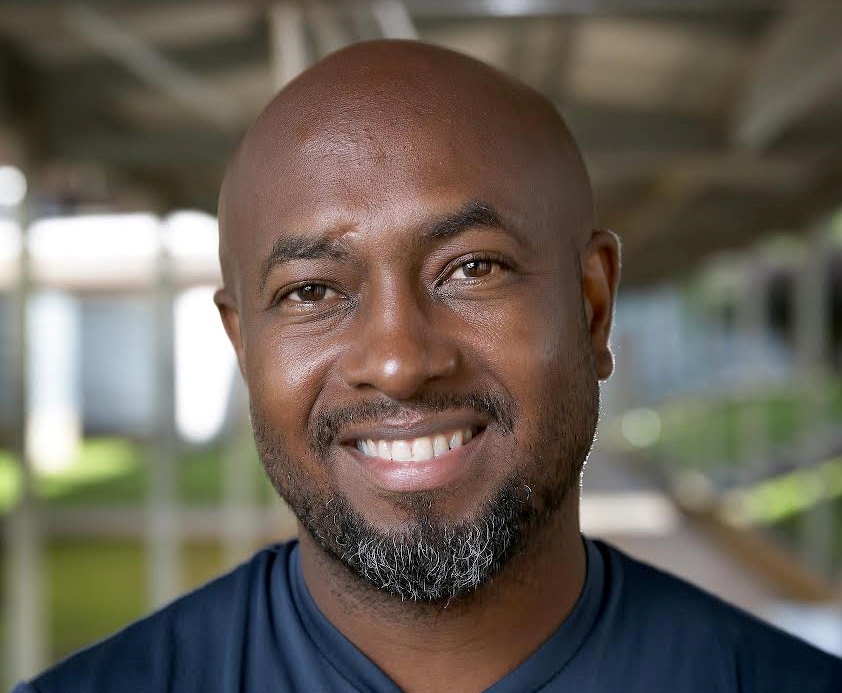
Lasana Liburd is the managing director and chief editor at Wired868.com and a journalist with over 20 years experience at several Trinidad and Tobago and international publications including Play the Game, World Soccer, UK Guardian and the Trinidad Express.
 Wired868 Wired868 for smart sport news and opinion
Wired868 Wired868 for smart sport news and opinion
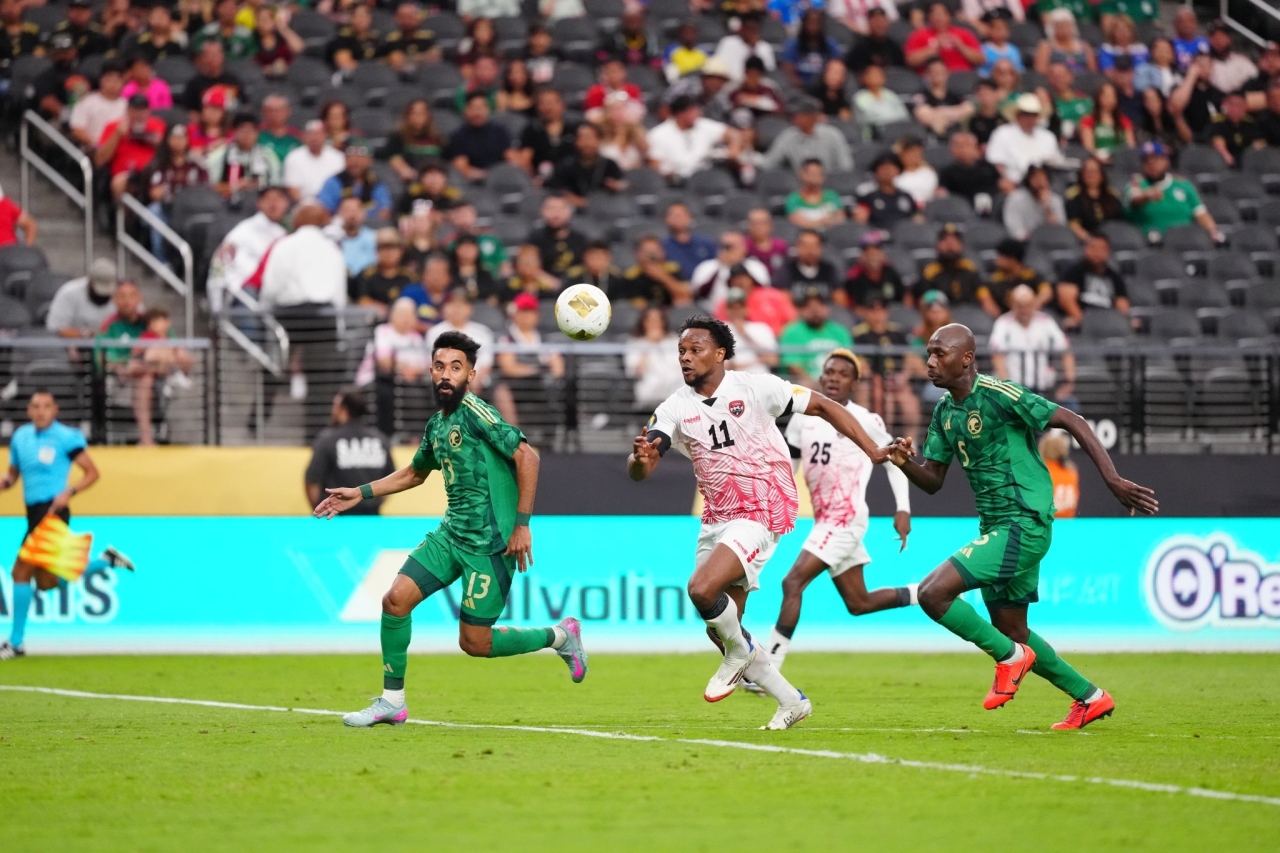
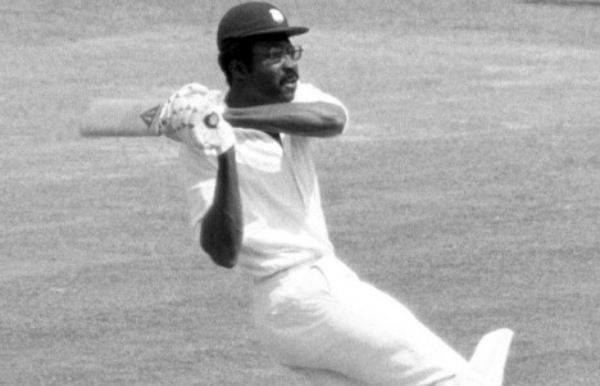
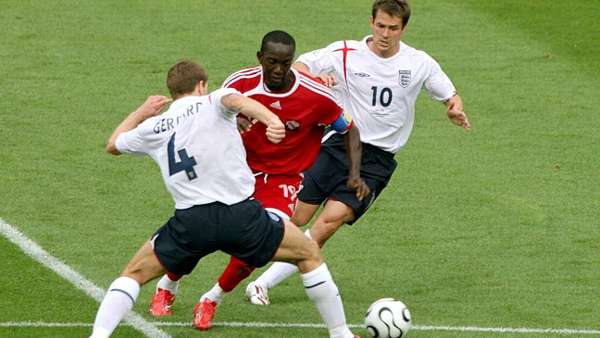


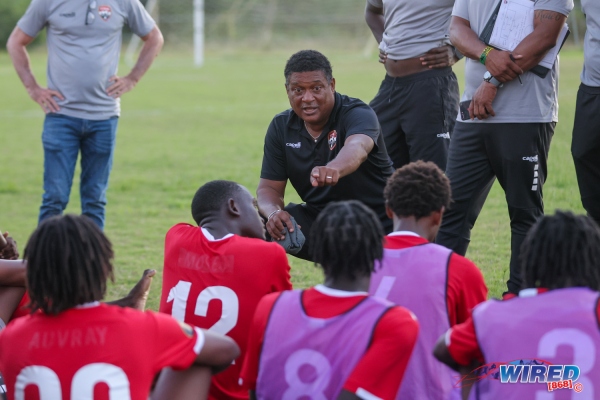
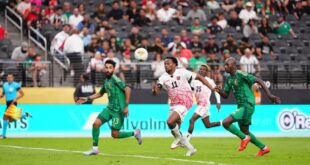
My late husband Gerald Figeroux was the goal keeper for Trinidad
He passed on the 26th of October 2019 I will be back to celebrate his life when I can travel it will be nice if I can a picture of his Tshirt that he use to play with because she also placed in Canada she is 19 thank you
Nice article. Brought back memories of when T&T ruled football in the Caribbean
The days of football in front of the Grand Stand and the College boys playing in the Port of Spain Football League (POSFL) against the ‘big men’ of Maple, Malvern, Shamrock, Casuals and later Regiment cannot be forgotten.
The epic annual Intercol battles between the ‘Saints’ and the ‘Royalians’ also in front of the Grand Stand were attended by thousands, young and old, and were eagerly awaited annually. The last time at that venue was 1962 then it was shifted to the Oval in 1963. For that centenary year of CIC, Gellineau, Charlie Davis, Wayne Smart et al, won North and National football intercol and the cricket team replicated the achievement .
One error….. I think. Gellineau and other alumni of CIC and QRC played for Harvard in the Southern Amateur Football League, although based in POS and were good enough to win a major trophy in their.
Obviously, I am an alumnus of CIC 🙂
Enough rambling from me.
“Obviously, I am an alumnus of CIC.”
I cannot confirm your correction about where the alumni played but I can confirm that Fatima were already a part of the annual Intercol games well before they were moved to the Oval in 1963.
I think their first time was in 1952 but I know for certain that they first won the title in 1965. That year, they beat QRC 4-2 in the final.
The refereeing, I suspect, was questionable although I doubt Gally mentions it in his recent history-rich book. How else would they have won?
No marks for guessing where I went to school.
At least you declared your allegiance.
The Wired868 Editor mistakenly believes that he conceals his biases but in spite of him they emerge for all to see in spite of him.
What other explanation can there be for CIC’s Gellineau being in the headline along with QRC’s Lincoln Phillip? Bias, that’s all!